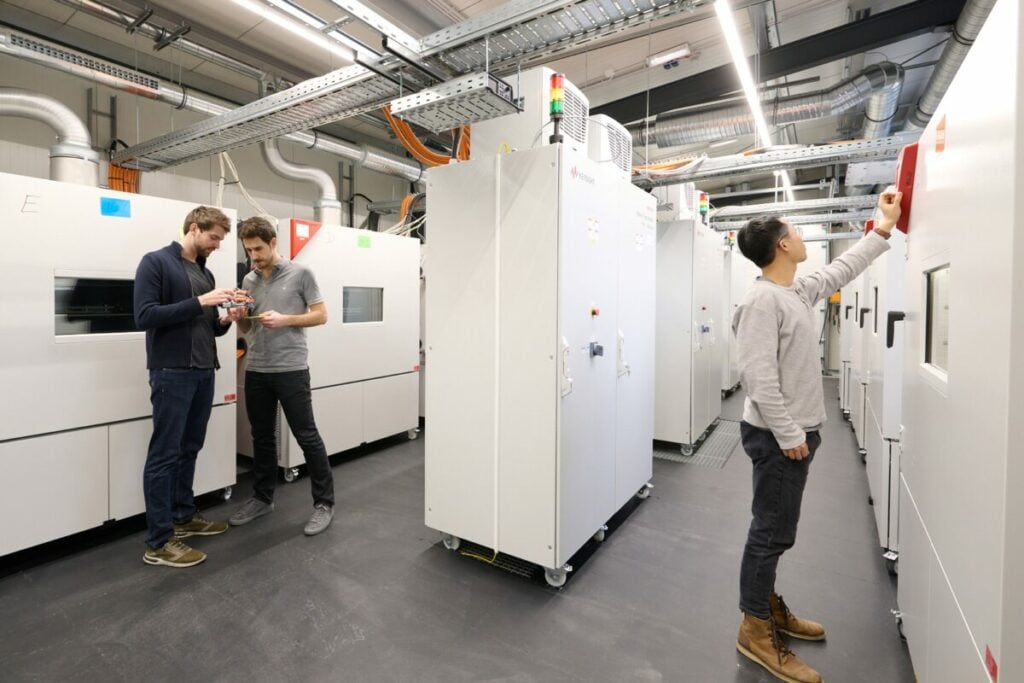
The way we think about battery storage tech is evolving as quickly as the market is, writes Dr. Matthias Simolka, product manager at battery data analytics provider TWAICE.
2023 was another blockbuster year for battery energy storage systems (BESS), with major deployments and easing supply chain issues marking a year of growth for BESS, albeit with safety concerns continuing to grab headlines.
Enjoy 12 months of exclusive analysis
- Regular insight and analysis of the industry’s biggest developments
- In-depth interviews with the industry’s leading figures
- Annual digital subscription to the PV Tech Power journal
- Discounts on Solar Media’s portfolio of events, in-person and virtual
The technology will continue to mature this year, and while there will be continued advancements in ESS, there will also be a greater focus on safety as energy storage becomes more commonplace and transitions from a novelty to a necessity. 2024 will also see an evolution in how BESS will be used in the future.
This article is going to elaborate on those three topics and will provide more details and the whys and hows of the developments in 2024.
The year of safety at scale
If the energy storage industry has learned anything from 2023, then it is that battery safety requires more attention.
Numerous incidents in 2023 show that keeping batteries safe is not as easy as it may seem in the beginning. Batteries are complex electrochemical systems. They require safety measures beyond regulatory compliance.
Their safety will no longer be viewed as just a box to be checked, but as an intrinsic element vital for the scalable and sustainable growth of battery technology. This paradigm shift recognises that as battery applications become more diverse and widespread, the margin for error narrows. A more comprehensive approach to safety is needed.
As part of this comprehensive approach, BESS providers and operators will focus increasingly on operational safety, highlighting the importance of continuous monitoring throughout the battery’s lifecycle, from commissioning to end-of-life (EoL).

This approach underscores the dynamic nature of battery systems, where safety is not a static feature but a continuous requirement. Advanced monitoring systems and predictive maintenance technologies are being integrated into battery systems, enabling real-time tracking of performance metrics and early detection of potential safety issues.
This not only enhances the reliability of battery systems but also extends their operational lifespan, ensuring safety and efficiency throughout their use.
In essence, as the energy storage industry moves away from an early adopter phase to a more mature application of BESS, battery safety will be a key focus point. This is because battery safety and reliability play a crucial role in operating batteries in an efficient and scalable manner.
From sodium-ion to solid-state
Along with advancements in safety, BESS will also see innovative developments in technology this year. The BESS industry has been dominated by lithium-ion batteries, but the need for more long-duration storage, which cannot currently be done economically and safely with lithium, will open the door for promising non-lithium technologies.
Applications requiring extended storage durations, particularly those exceeding 8 hours, will be increasingly using sodium-ion batteries, for example. This is due to the demand for more economical storage solutions.
This shift is driven by the characteristics of sodium-ion technology, which offers a balance of affordability, safety, and suitable energy density for long-duration storage. Its chemistry is particularly advantageous for stationary applications where space and weight constraints are less critical than in mobile applications.
Sodium-ion batteries have a significant cost advantage compared to lithium-ion batteries, as sodium can be extracted practically anywhere in the world.
Simultaneously, solid-state batteries will emerge as a premium option in the market. Solid-state batteries are recognised for their superior performance, including higher energy density and enhanced safety features due to their non-flammable solid electrolytes.
However, this advanced technology comes with higher costs, positioning solid-state batteries as a luxury choice in the battery market, at least until technology matures. Solid-state batteries require sophisticated manufacturing processes and new supply chains making production expensive.
Despite the cost, the demand for solid-state batteries will be growing, particularly among applications where performance and safety are paramount, and budget constraints are less of an issue.
This trend highlights a diversifying battery market, where different technologies are being optimised for specific use cases, offering solutions ranging from cost-effective to performance-oriented.
The application-led evolution of BESS
In 2024, one of the most notable developments will be the extended duration capabilities of large-scale batteries. Some systems will reach up to 4 hours of continuous operation. This extension in duration represents a major step forward in energy storage, enabling more effective integration of renewable energy sources into the grid and providing greater stability in energy supply.
The growing demand for long-duration energy storage (LDES), lower-power-density applications will be particularly evident in sectors where energy needs are substantial but spread out over longer periods. This includes industrial processes, large-scale renewable integration, and grid stabilisation in areas with intermittent power sources. The focus on long-duration storage reflects a broader shift in the energy industry towards more diverse and reliable energy solutions.
Alongside these technological advancements, there will be a shift in the economic landscape of BESS. Operators are now exploring additional revenue streams, commonly referred to as ‘revenue stacking’.
This involves leveraging the multifaceted capabilities of storage systems to participate in various market services like peak shaving, load shifting, frequency regulation, and black start services.
However, this diversification of revenue sources comes at the cost of increased operational complexity. Managing these different revenue streams requires sophisticated control systems, a deep understanding of the market dynamics and the knowledge of how different load profiles impact battery degradation. All of this makes the operation of BESS assets more intricate than ever before.
In summary, the evolution of BESS in 2024 is characterised by several key trends: a continued focus on safety, the commercialisation of non-lithium technologies, the extension of battery durations for large-scale systems, and the exploration of additional revenue streams through complex operational strategies. These trends underscore the dynamic nature of the BESS market and highlight the ongoing innovation and adaptation in response to changing energy needs and market opportunities.
Energy-Storage.news’ publisher Solar Media will host the 9th annual Energy Storage Summit EU in London, 20-21 February 2024. This year it is moving to a larger venue, bringing together Europe’s leading investors, policymakers, developers, utilities, energy buyers and service providers all in one place. Visit the official site for more info.
About the Author
Dr. Matthias Simolka is a product manager and part of Technical Solution Engineering at TWAICE, a cloud-based battery analytics software provider headquartered in Germany. Matthias bridges the gap between Sales, Product and Tech, working with all teams to ensure maximum value and the optimal solution is delivered to battery customers.

